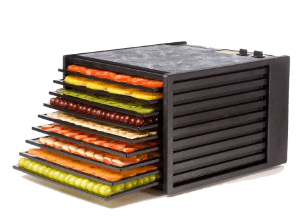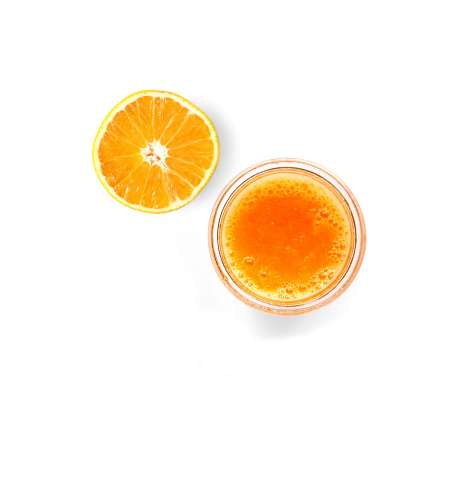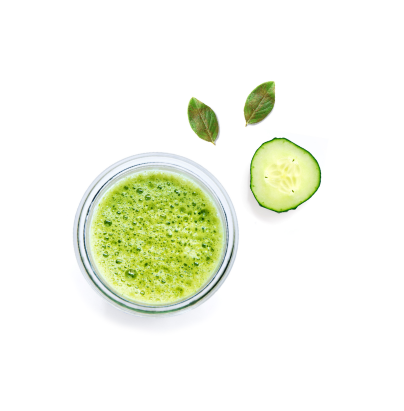Glossary Of Juicer Terms
Our Guide To Juicer Terminology
Below you’ll find some common juicer terms defined. Some terms are interchangeable with each other and we hope you’ll be able to make better sense of some of the juicer jargon you’ll come across when researching juicer types.
Auger– A helical screw shaped juicer part, used for crushing ingredients against the inside of a cone shaped screen – or filter – and squeezing out the juice. As the auger is turned by  the motor, the ingredients are pushed forwards by the screw part into a decreasingly small space between the auger tip and the stainless screen. Plant fibres are crushed, squeezed and ground together by the specially profiled shape of the auger tip as it presses them against the steel filter to squeeze out the juice.
the motor, the ingredients are pushed forwards by the screw part into a decreasingly small space between the auger tip and the stainless screen. Plant fibres are crushed, squeezed and ground together by the specially profiled shape of the auger tip as it presses them against the steel filter to squeeze out the juice.
Bioceramic Magnetic Gears – Biomagnets, or magnets placed in the centre of a Twin Gear Juicers gears are purported by some enthusiasts to improve the nutritional quality of juice by rearranging its molecular structure. However, so far this nutritional magic seems to be grounded squarely in the world of woo woo, with no properly reviewed scientific evidence that biomagnets make a jot of difference to the quality of juice. We’d like it to be true, but there’s no proof!
Blade – Usually refers to the cutting mechanism in a centrifugal juicer, usually consisting of a high speed rotating disc with minute sharp teeth that shred the produce to release the juice.  Often referred to as a blade-basket or blade-filter as the blade and the filter screen are usually manufactured as a single juicer part.
Often referred to as a blade-basket or blade-filter as the blade and the filter screen are usually manufactured as a single juicer part.
BPA – Bisphenol A or BPA is an organic synthetic compound used in the manufacture of plastics. The hormone like properties of BPA have made it a health concern and many manufacturers have withdrawn it from use in products that come into contact with food and drink. Hence you will see many of our products are described as ‘BPA-Free’
Centrifugal Juicer – The term means that this type of juicer uses centrifugal force to extract the juice. Produce is shredded by a high speed spinning grater or blade and then flung against the walls of an attached filter basket. As the pulp is spun by the basket, juice passes through the filter holes for collection below. In most cases the pulp is then ejected from the top of the basket into a separate container,
Citrus Press – This term can be used to refer to any citrus juicer but the original meaning refers to the mechanical pressing action of the type of hand operated press in our manual citrus juicer section.
Cold Press Juicer – This term applies to any juicer that extracts the juice using a pressing action, without any additional heat being created. The term ‘cold pressed’ can be applied to the juice from any low speed masticating juicer because they all use pressure to extract juice without adding heat. Although commonly used to describe masticating juicers, the term could technically also be applied to all citrus juicers as they also use a pressing or squeezing action to extract juice.
Feed Chute – The aperture on the juicer into which ingredients are placed when juicing. Usually the feed chute is at the highest point on the juicer so that ingredients can either fall or be pushed into the juicing mechanism.
Food Pusher – Often just called the pusher, this is a tamper used to feed ingredients into the feed chute or feed tube of your juicer.
Fruit Juicer – Any juicer that is capable of juicing a range of fruits. This term is a little incomplete because any juicers that can juice fruits can usually also juice most vegetables.
Gear Juicer – Our first genuinely confusing term, because it is often wrongly used. The only type of masticating juicer that uses gears to process ingredients is a Twin Gear Juicer. In this type, two stainless steel cylindrical gears mesh together and crush ingredients between the gears. Unfortunately, Single Auger Juicers are confusingly sometimes called ‘Single Gear Juicers’ – this is wrong because an auger is not a gear. Gears have ‘teeth’ that can mesh with other gears – an auger does not have teeth.
two stainless steel cylindrical gears mesh together and crush ingredients between the gears. Unfortunately, Single Auger Juicers are confusingly sometimes called ‘Single Gear Juicers’ – this is wrong because an auger is not a gear. Gears have ‘teeth’ that can mesh with other gears – an auger does not have teeth.
Horizontal Juicer – Used to describe the orientation of the juicing process in some masticating juicers. Single auger juicers can work with the auger operating in either a horizontal or a vertical orientation, so we divide them into these separate groups in our juicer categories.
Juice Bowl/Juice Drum – The part of the juicer that collects juice and directs it to the juice outlet. The Juice Bowl or Drum is usually the part inside which the mechanical juicing parts operate. The bowl usually has two outlets, one for the juice and one for the pulp.
 Juicing Screen – Often used to describe the filter component that separates the juice from the pulp in a juicer, usually consists of a conical or cylindrical profile stainless steel sheet with small perforations, or in the case of some centrifugal models a stainless steel mesh.
Juicing Screen – Often used to describe the filter component that separates the juice from the pulp in a juicer, usually consists of a conical or cylindrical profile stainless steel sheet with small perforations, or in the case of some centrifugal models a stainless steel mesh.
Manual Juicer – A juicer that is hand-operated with no electric motor. Usually either refers to a mechanical citrus press with a lever action, or to a hand cranked single auger juicer commonly used for wheatgrass.
Masticating Juicer – Masticate means to chew. Masticating Juicers use either an auger or gears to chew and grind plant fibres together while squeezing out juice through a screen under pressure. Masticating juicers have been shown to produce a more nutritious juice than centrifugal models. This is because they achieve a more thorough breakdown of the juicing ingredients.
Pulp Bucket – As it sounds, the container that collects the waste pulp when juicing
Pulp Pressure Adjustment – Some masticating juicers offer the facility to change the pressure on the pulp when juice is being squeezed.  This will be usually a range of settings on a silicone pulp nozzle, or a screw adjuster on a spring loaded pulp nozzle in a Twin Gear model.
This will be usually a range of settings on a silicone pulp nozzle, or a screw adjuster on a spring loaded pulp nozzle in a Twin Gear model.
Single Auger Juicer – A masticating juicer that uses a specially shaped auger or screw to crush juicing ingredients against a cone shaped stainless filter to extract juice. Single auger juicers fall into two types, vertical or horizontal in operation. Vertically oriented single auger juicers are also commonly referred to as ‘Slow Juicers’, a term that first became popular to describe this type of juicer. They are also known as ‘Cold Press Juicers’ and these terms are often used interchangeably.
Slow Juicer – Any juicer with low speed operation. Technically, almost all masticating juicers could be classed as slow juicers but the term is generally used to refer to an upright or Vertical Single Auger Juicer.
Triturating – In juicing we use the sense of the word triturating that means to break down or finely grind. The term Triturating Juicer is usually applied to Twin Gear Juicers, because the tiny gap between the gears where the ingredients are crushed is believed to offer the finest breakdown of plant fibres possible in a household juicer.
Twin Gear Juicer – A masticating juicer that processes ingredients between two very closely fitting stainless steel cylindrical gears, before extracting the juice under pressure. Believed to offer the most nutritious juice from a domestic juicer, twin gear models also require a bit more patience and skill than the average juicer so they tend to be the domain of real enthusiasts, or people who are juicing to combat poor health.
Vertical Juicer – Any juicer that has the juicing parts oriented vertically, but the term is usually used to distinguish vertical single auger slow juicers from the older horizontal designs.
Wheatgrass – The grass grown from wheat grain, usually to a height of 8-10″, used for juicing. Wheatgrass juice is a true superfood containing a huge range of vitamins, minerals and amino acids.
Wheatgrass Juicer – Any juicer that is capable of successfully juicing wheatgrass. Wheatgrass is high in fibre and low in juice content. To juice it successfully you need a Single Auger Juicer or a Twin Gear Juicer. Single auger juicers are the most popular choice of wheatgrass capable juicer. A cheap hand operated auger juicer will suffice for just juicing wheatgrass, but all electric wheatgrassers are also capable of juicing all the more common juicing ingredients too.
Whole Fruit Juicer – Usually this term refers to juicers with a wide feed chute, most commonly of the size that would accept smaller apples whole. Whole fruit juicers also juice vegetables and their key advantage is in cutting down on the time taken for ingredient prep.
Disambiguation
Many of the juicer type terms that have been coined over the years are interchangeable with each other. This has happened as manufacturers have tried to distinguish their products with newer terminology and it can get a bit confusing. The area where this is most prevalent is in the way that the various types of masticating juicers are named and described. If we accept that the original and most common term for the group is to call them Masticating Juicers, then all the different types of masticating juicer can be better explained.
Masticating Juicers fall into two main categories with a separate sub category for the Champion Juicer. The Champion Juicer is a special case, being a ‘fast masticator’ which is great for hard fruits and veg and has a loyal following because of its power and durability. It uses a floating cutter to process ingredients at 1400 rpm, so unlike other masticating juicers it can’t really be called a ‘slow juicer’.
The two main categories of Masticating Juicer are Single Auger Juicers and Twin Gear Juicers (see above). These two sub categories are also both low speed juicers or Slow Juicers. They also juice using a Cold Press Action so they are also all technically Cold Press Juicers. For most purposes you could say that Masticating Juicer = Cold Press Juicer = Slow Juicer, but the latter two terms have been coined recently to refer primarily to Vertical Single Auger Juicers. Horizontal Auger and Twin Gear Juicers are also slow, and also have a cold pressing action, but if you’re researching the terms ‘Slow Juicer’ and ‘Cold Press Juicer’, you’ll probably be looking for a vertical one. We distinguish the types in separate vertical and horizontal sub categories in our Masticating Juicer sub categories.

 Register / Login
Register / Login 













